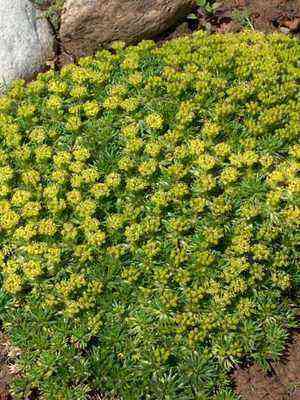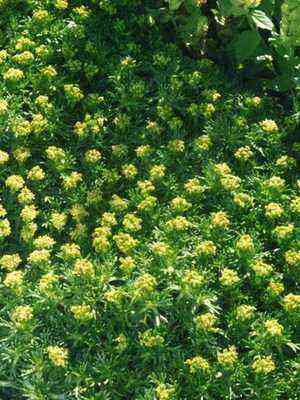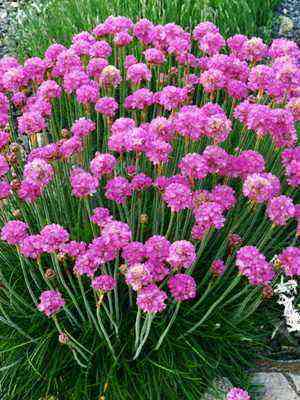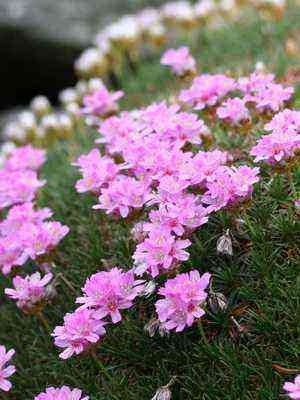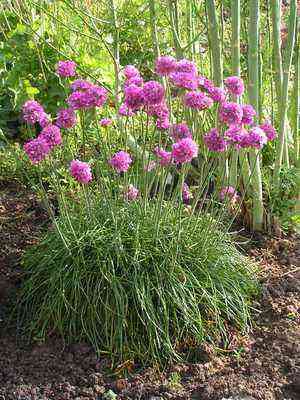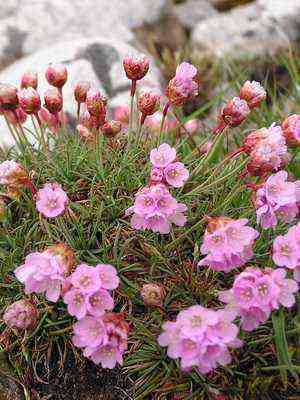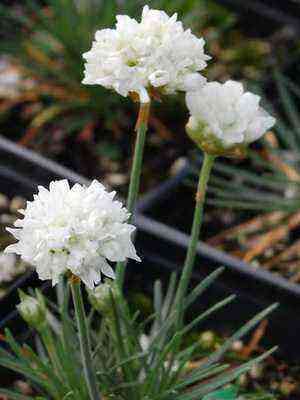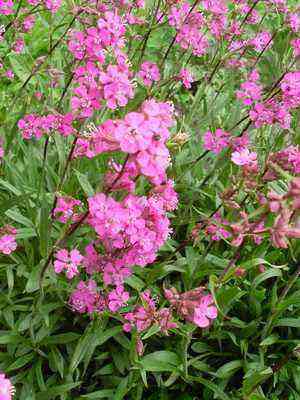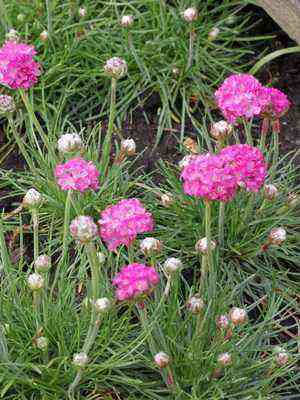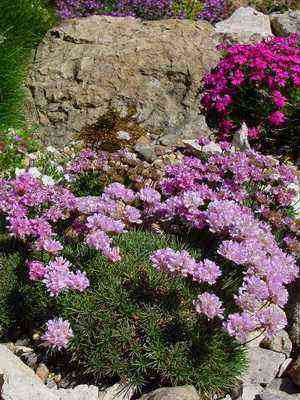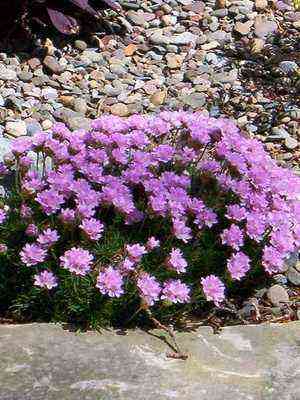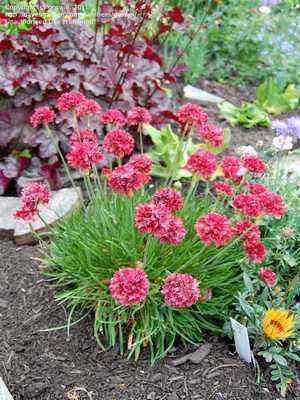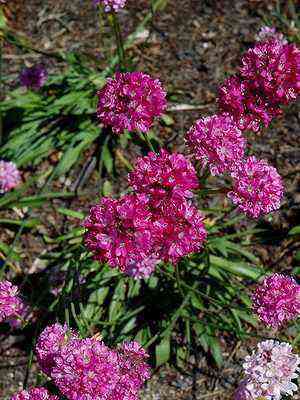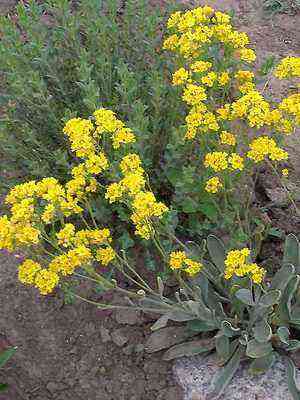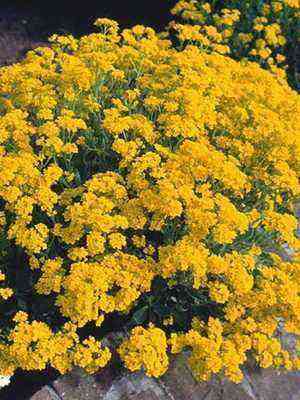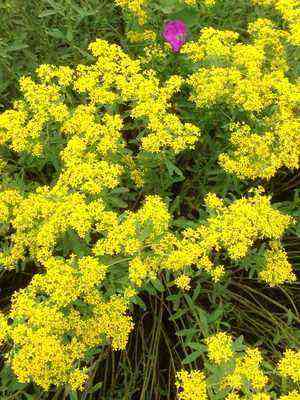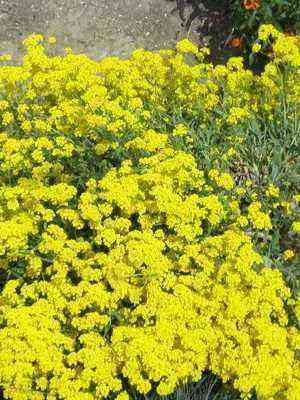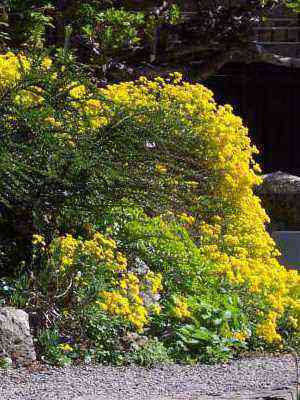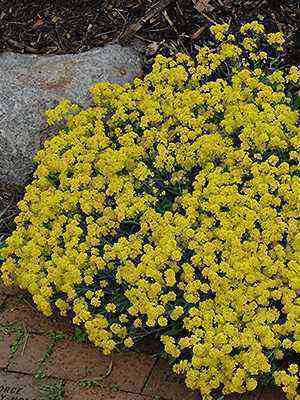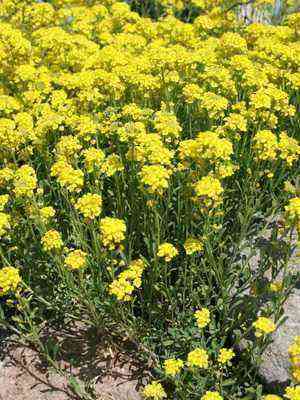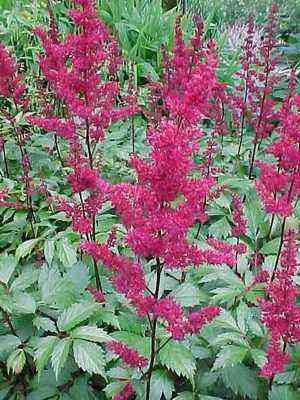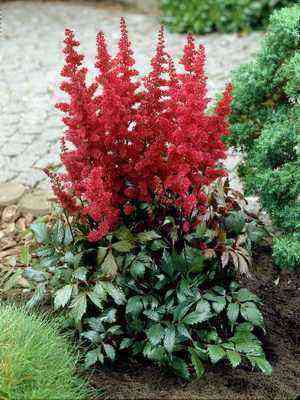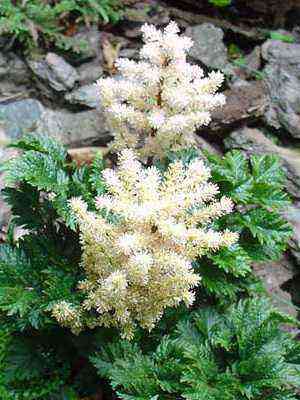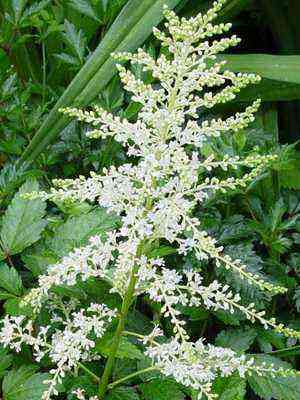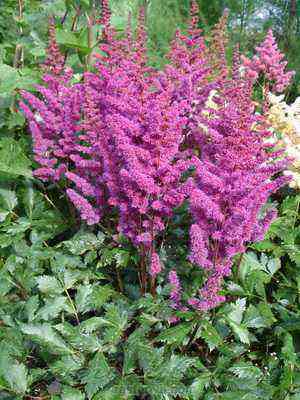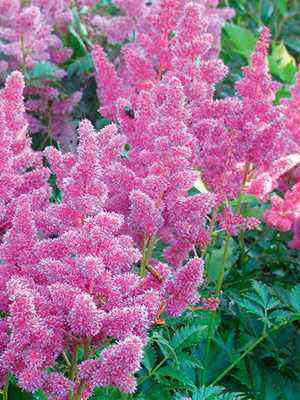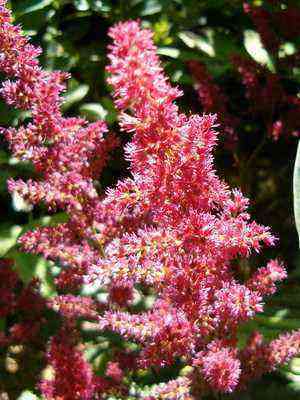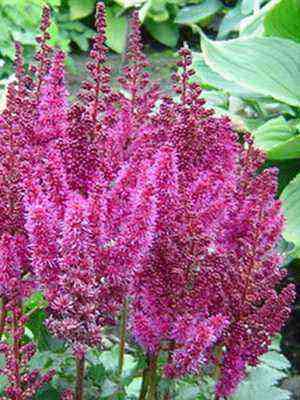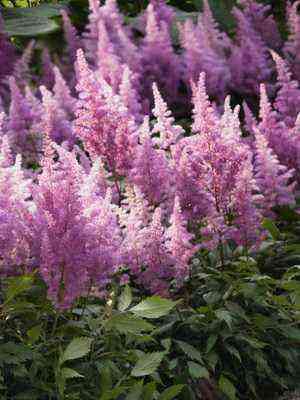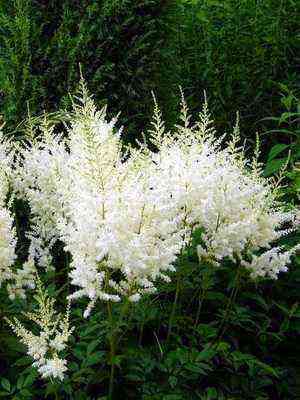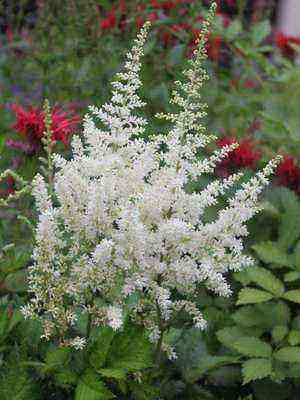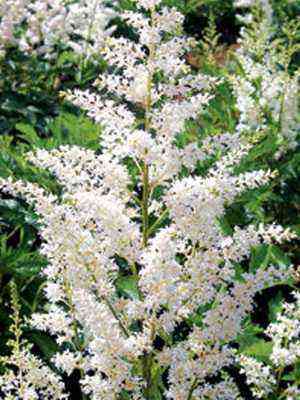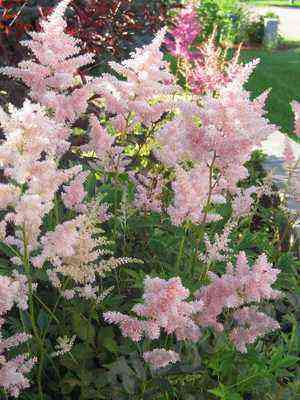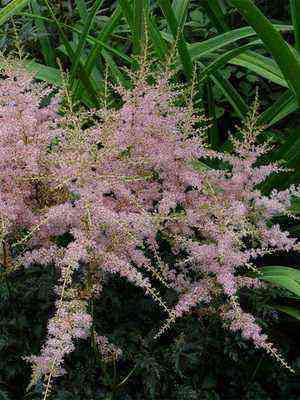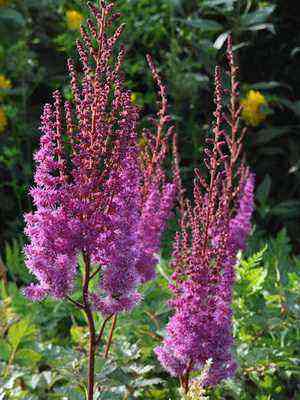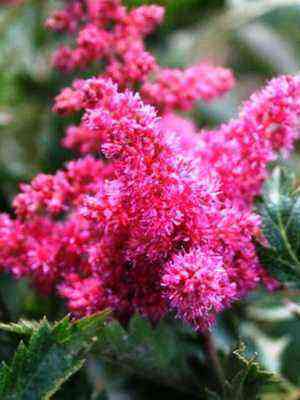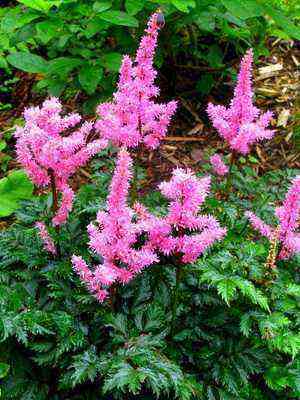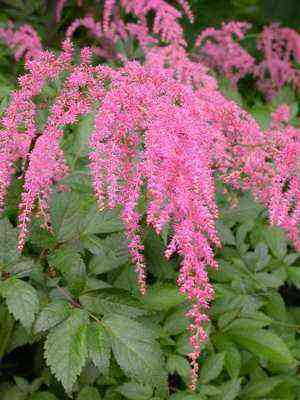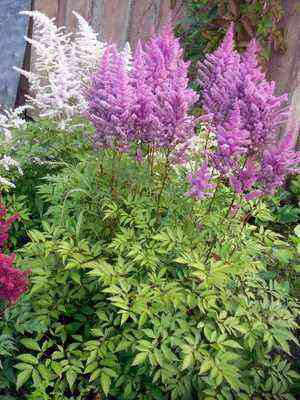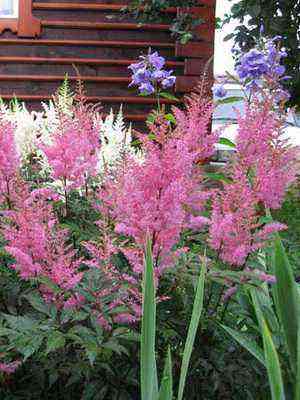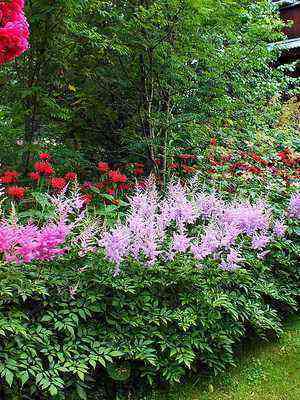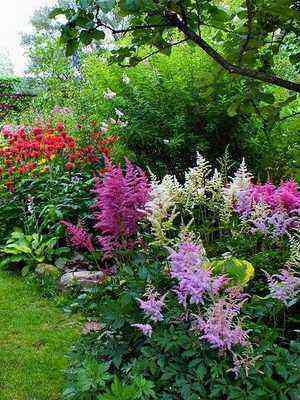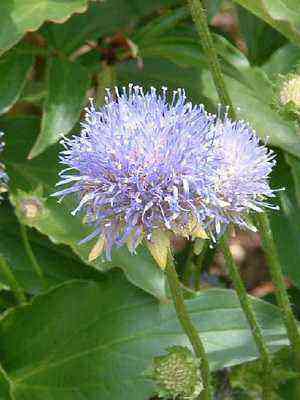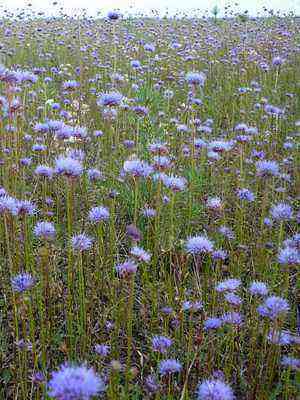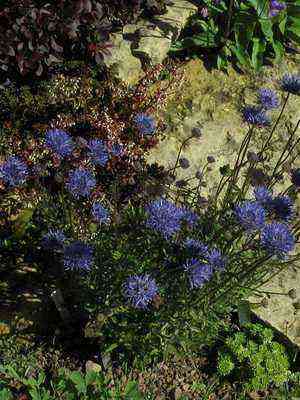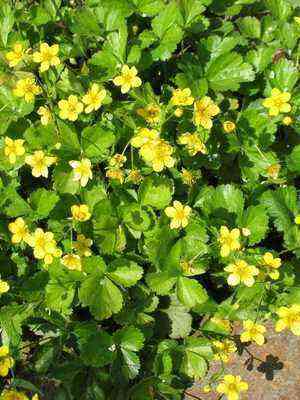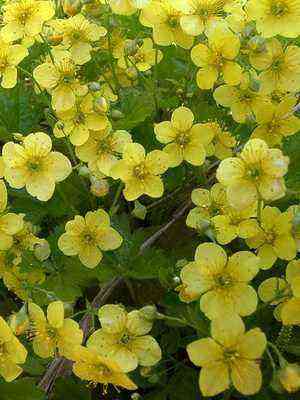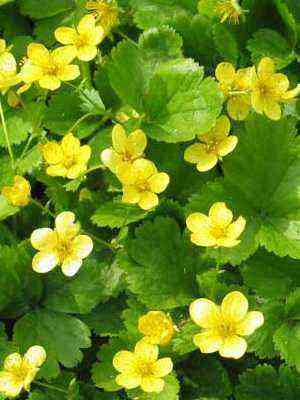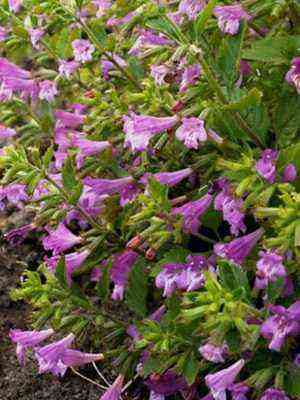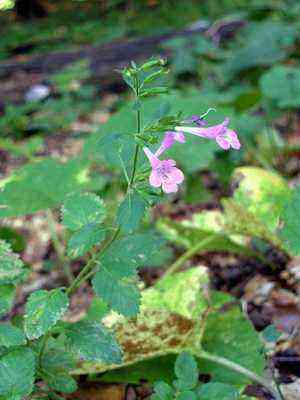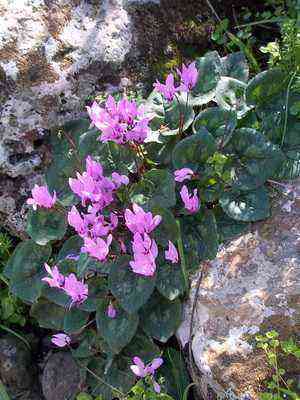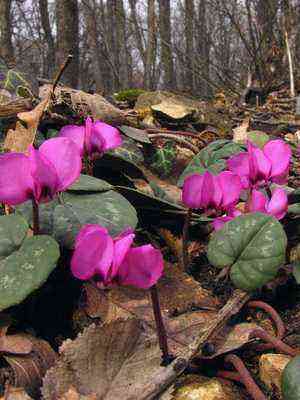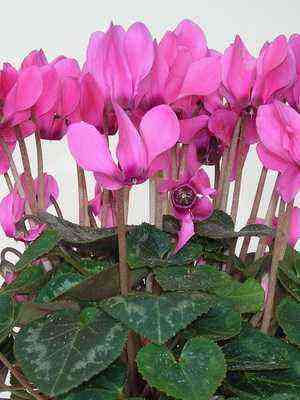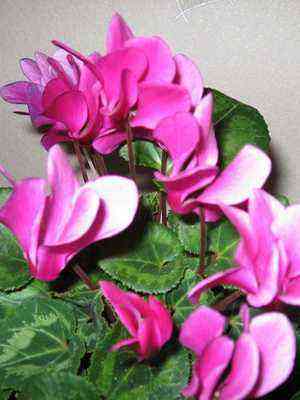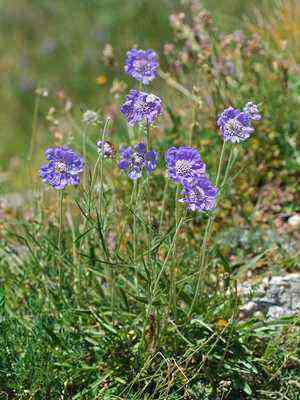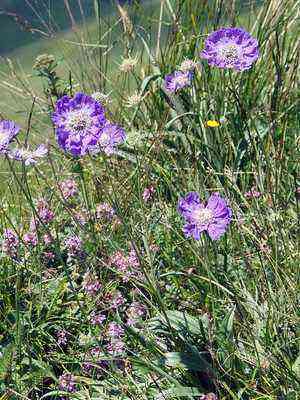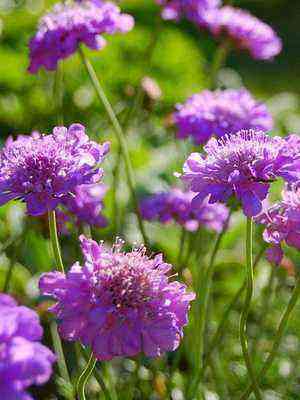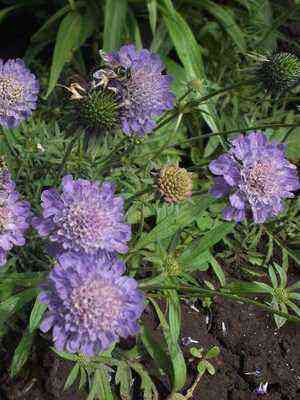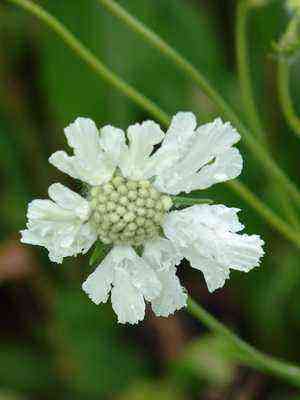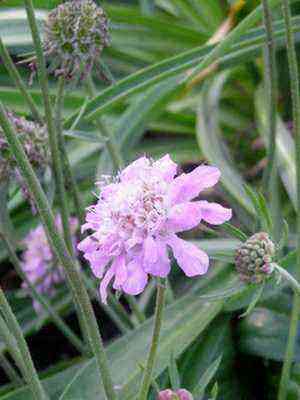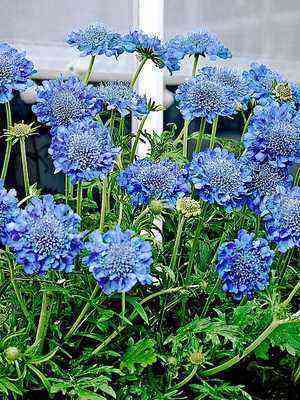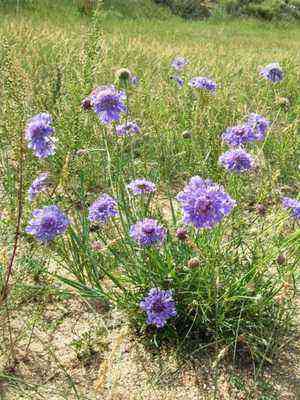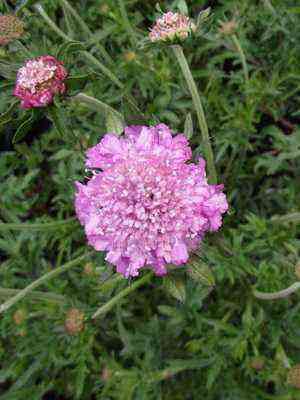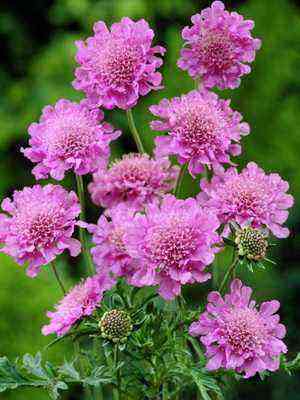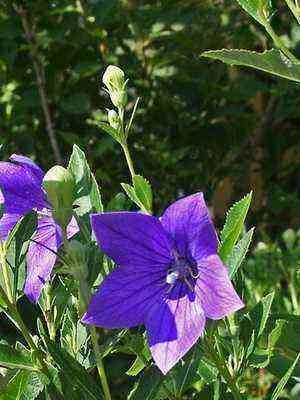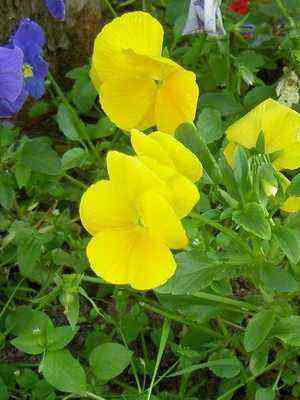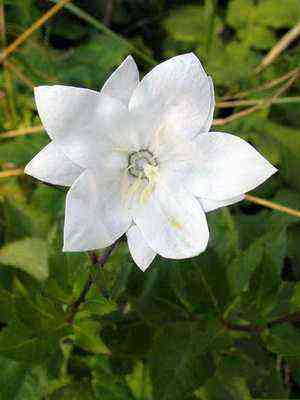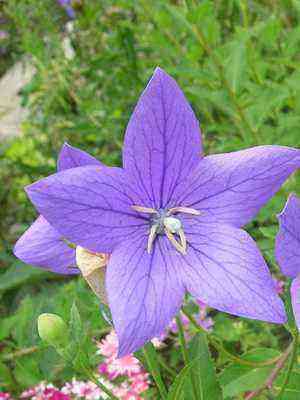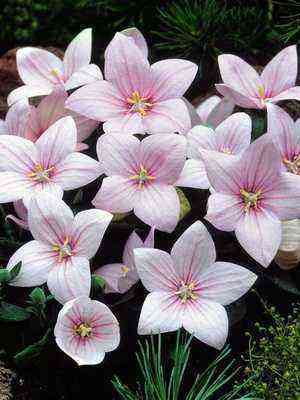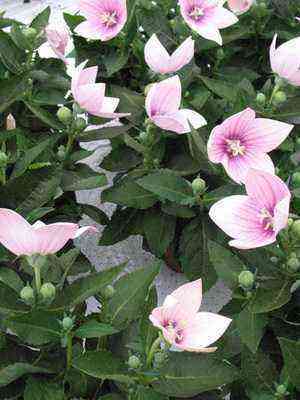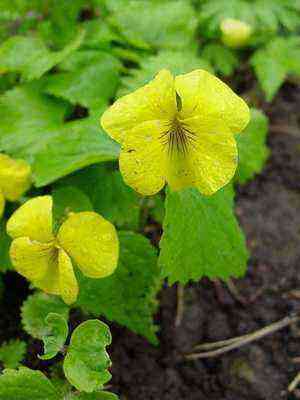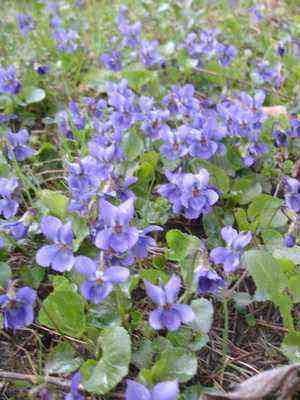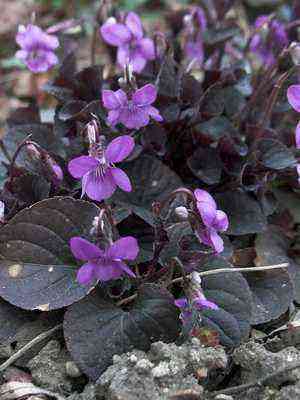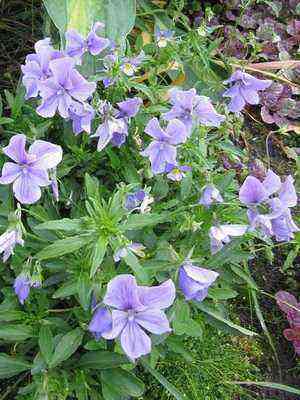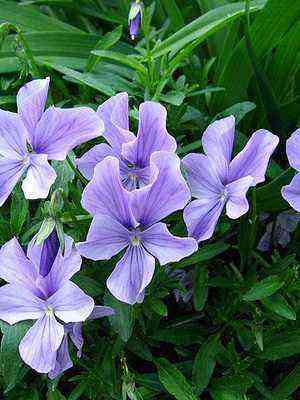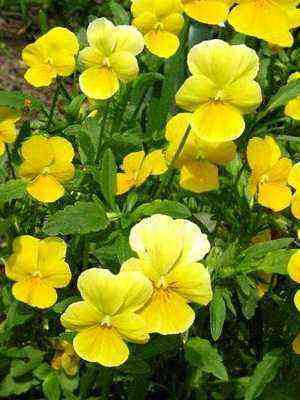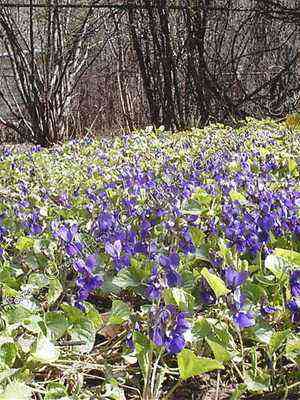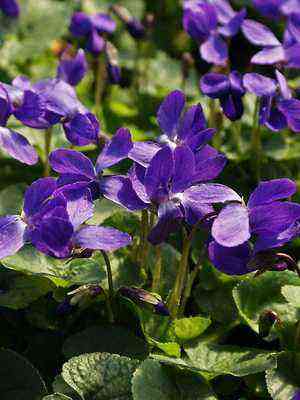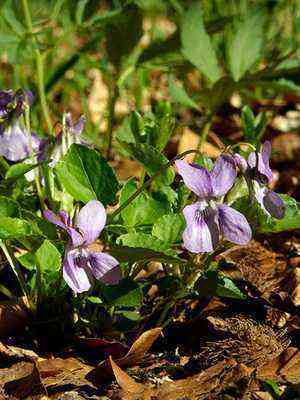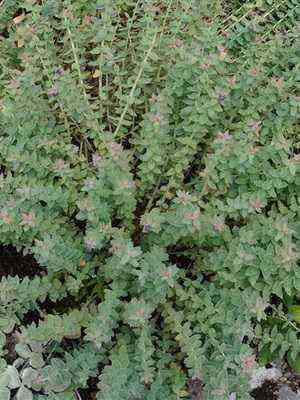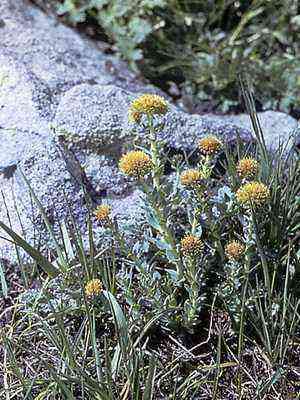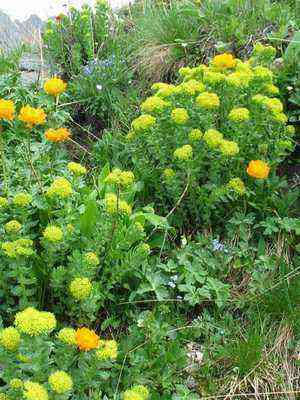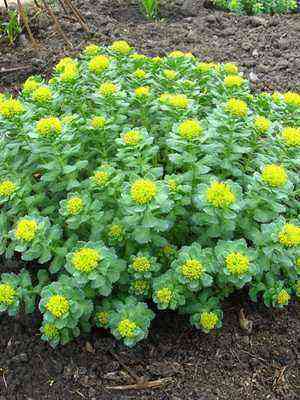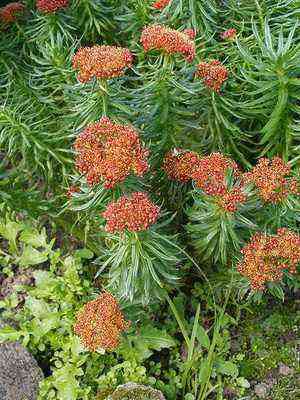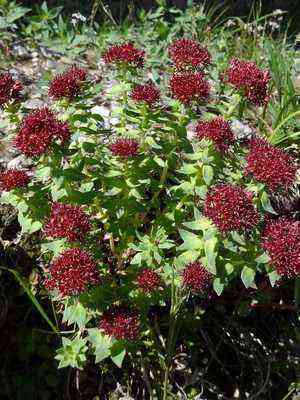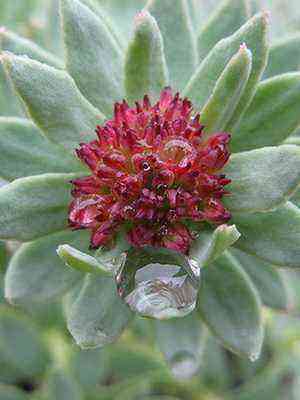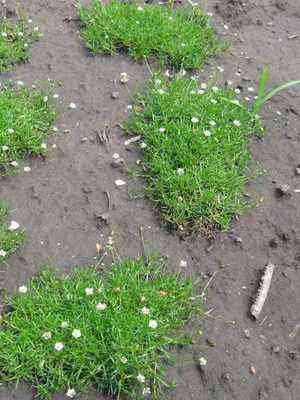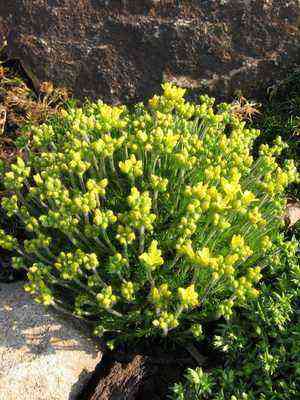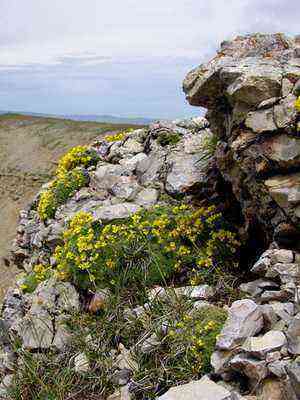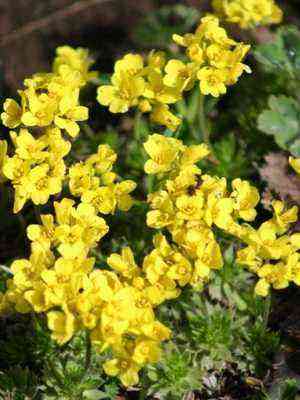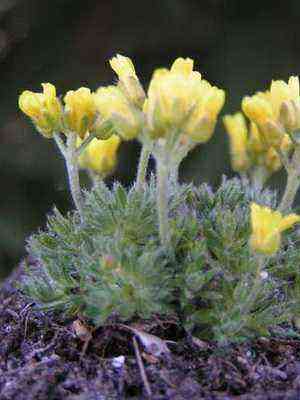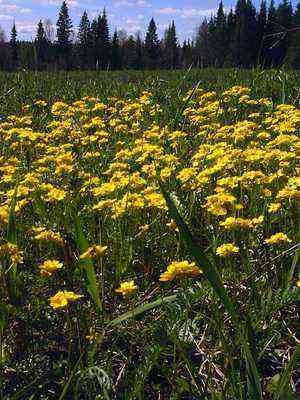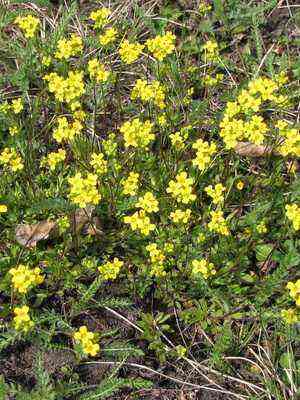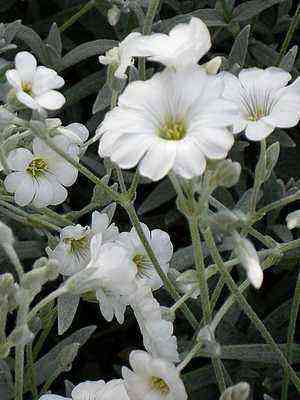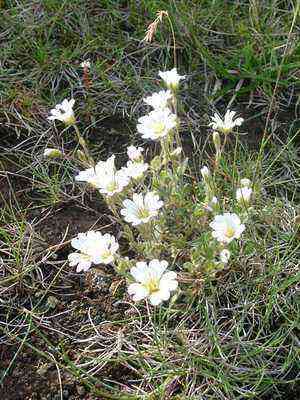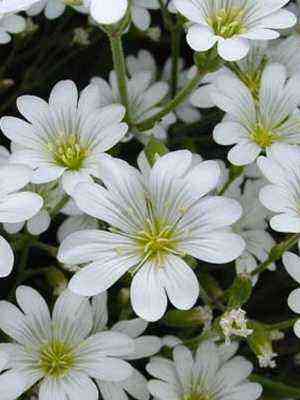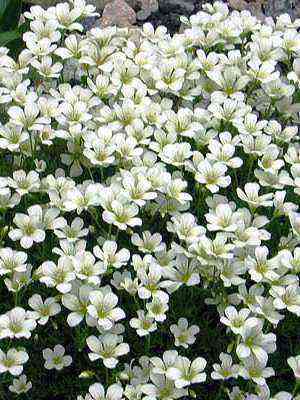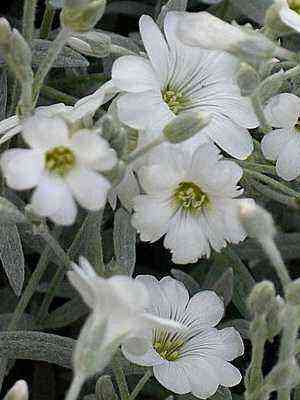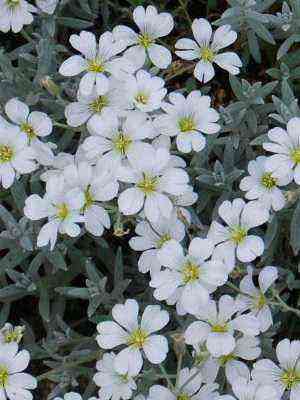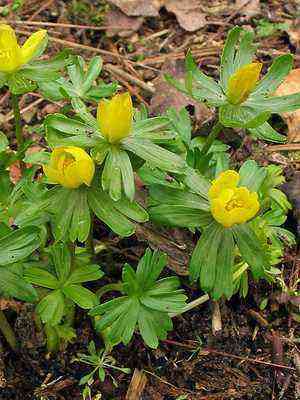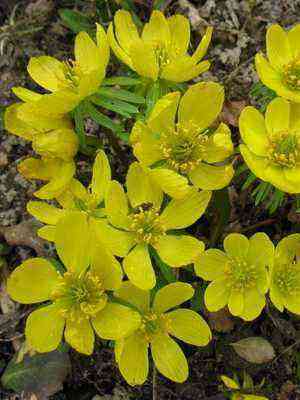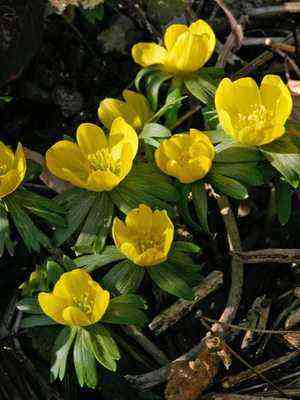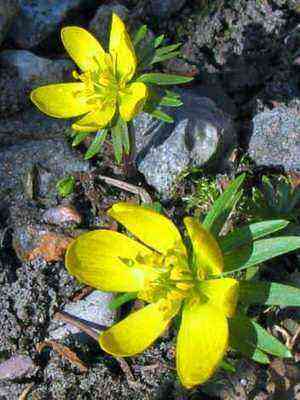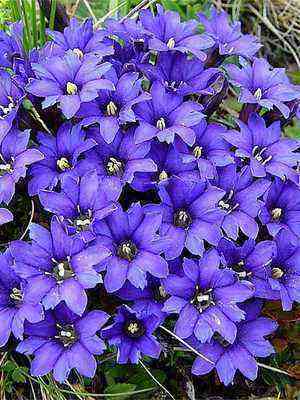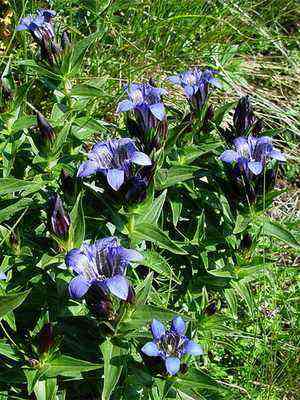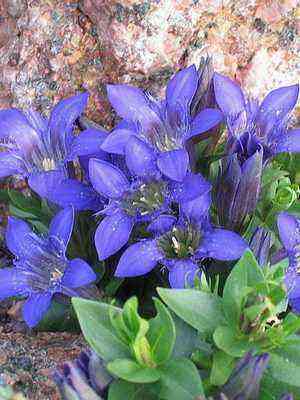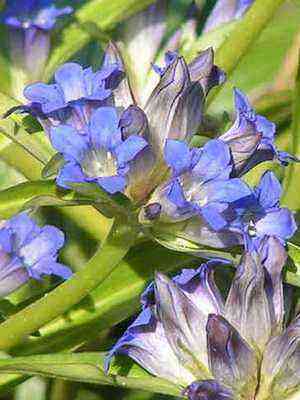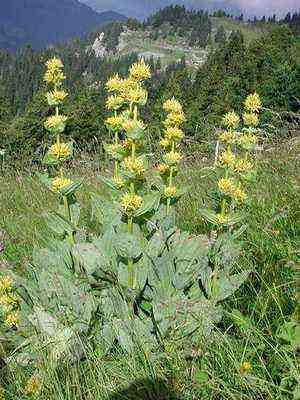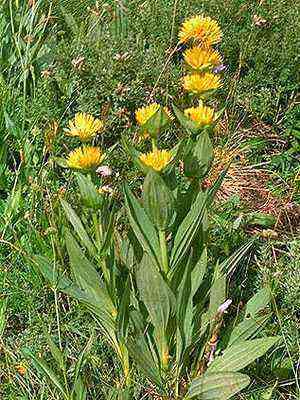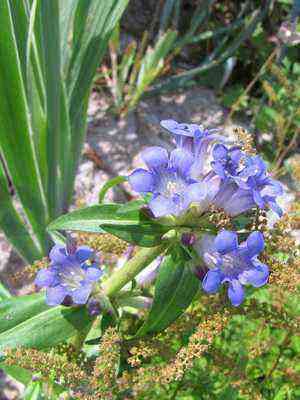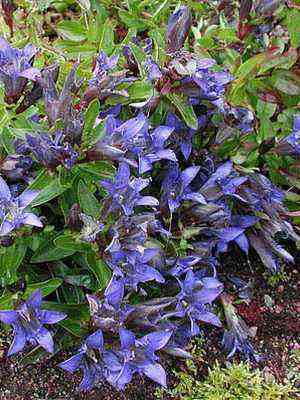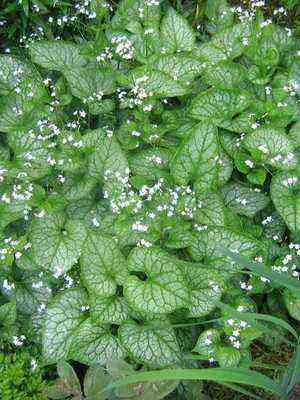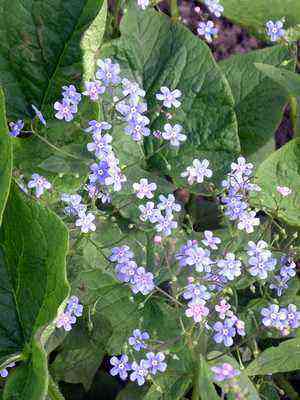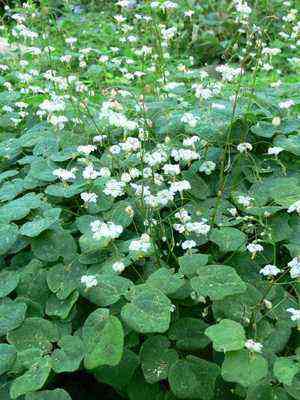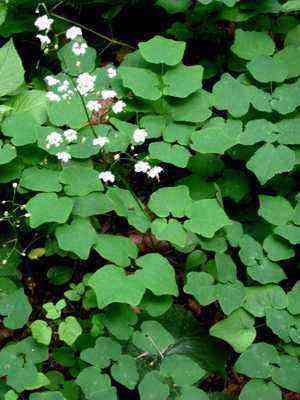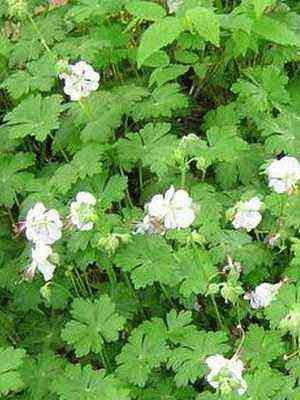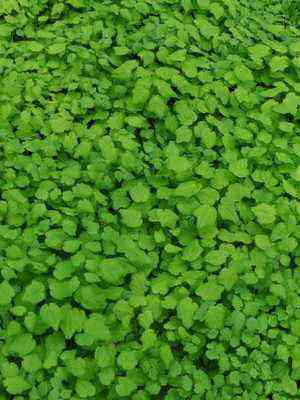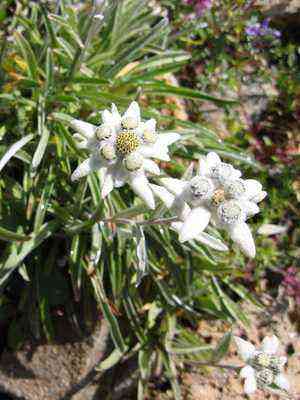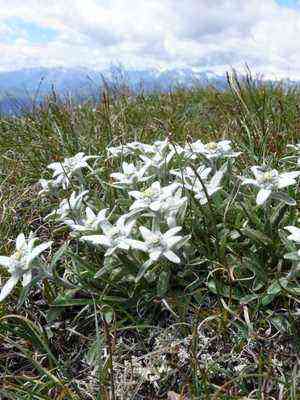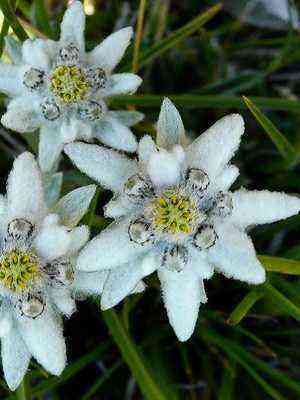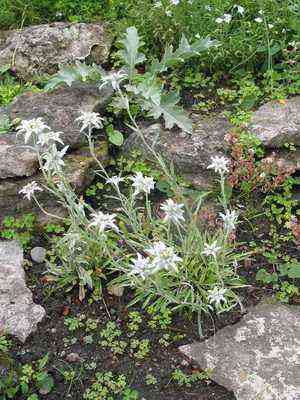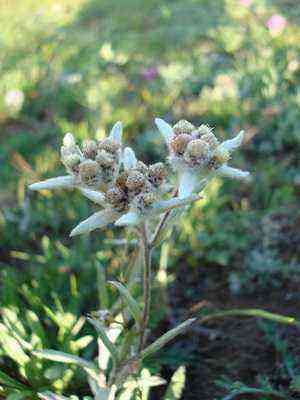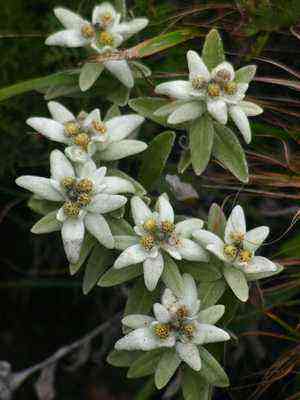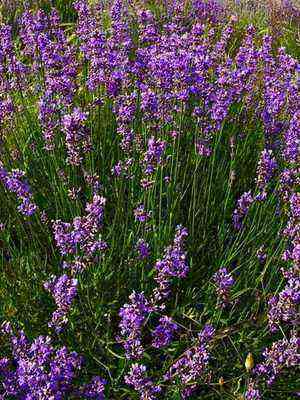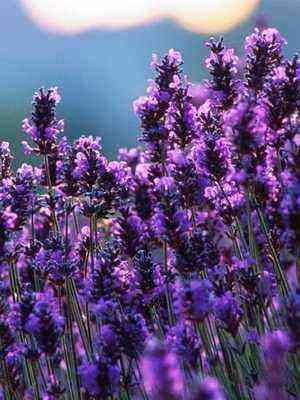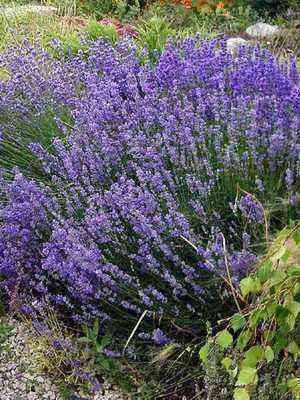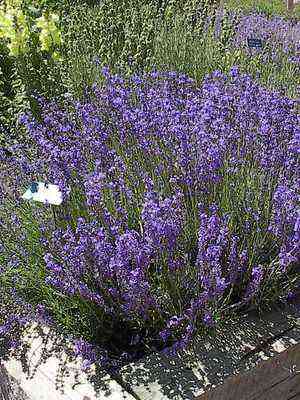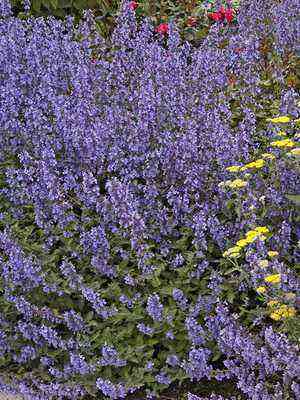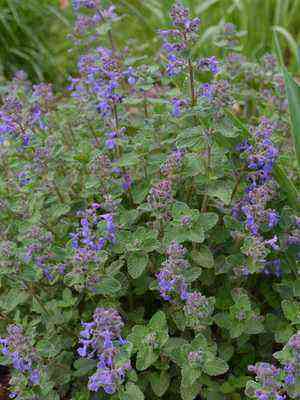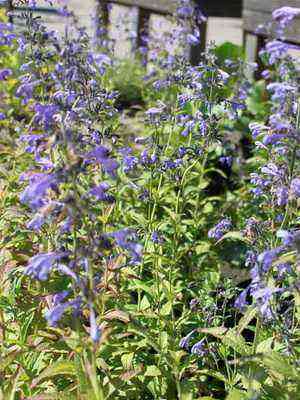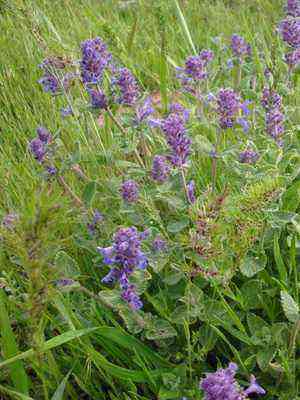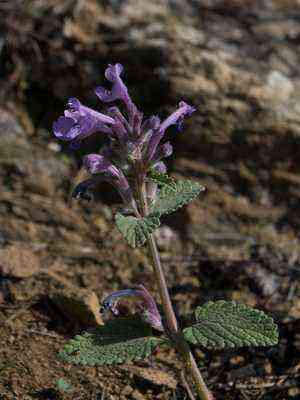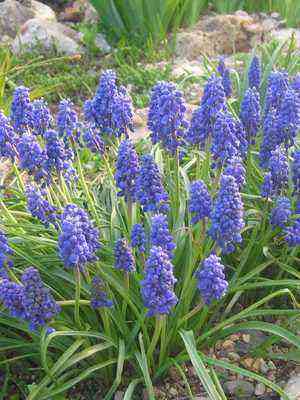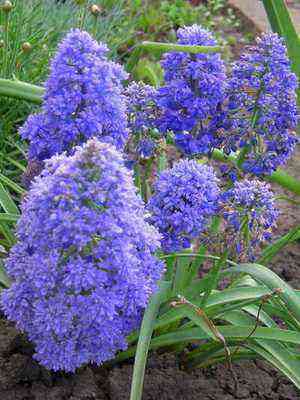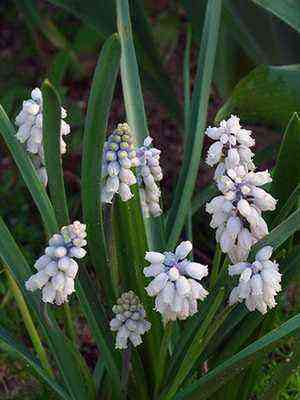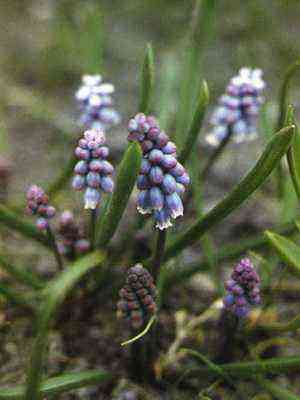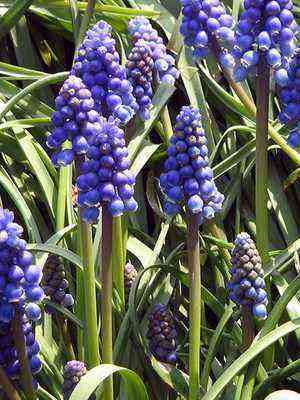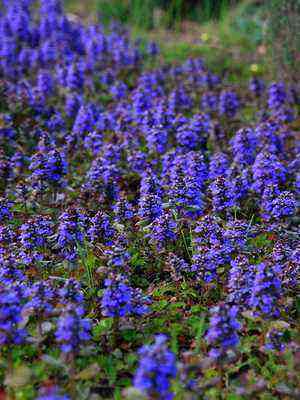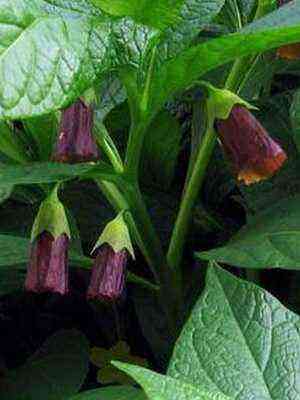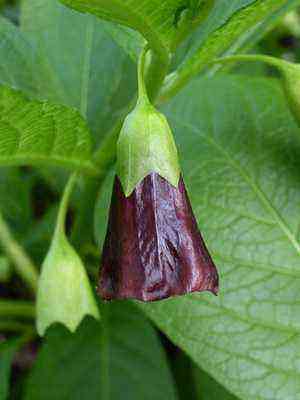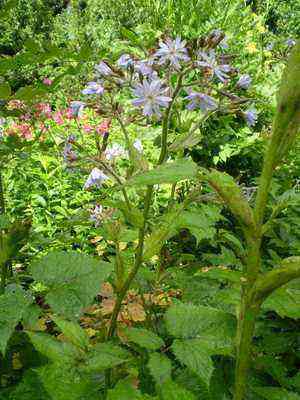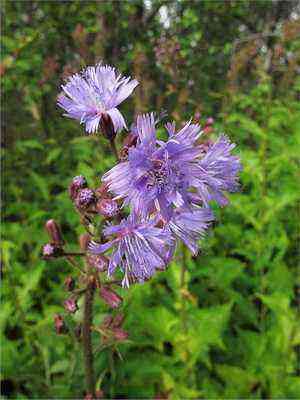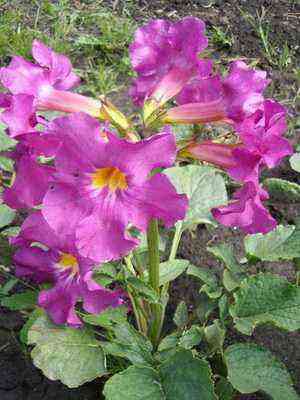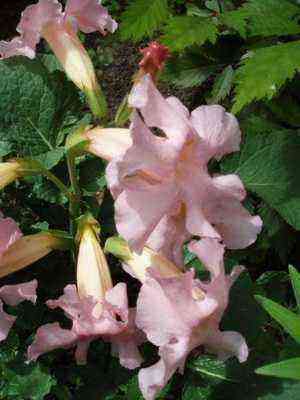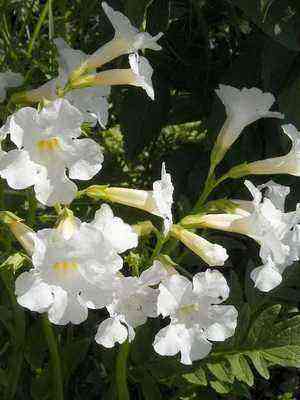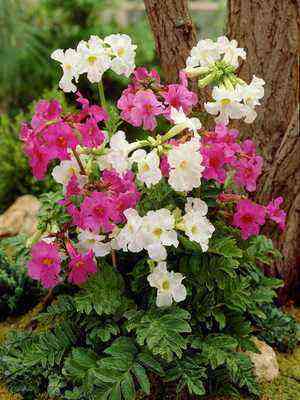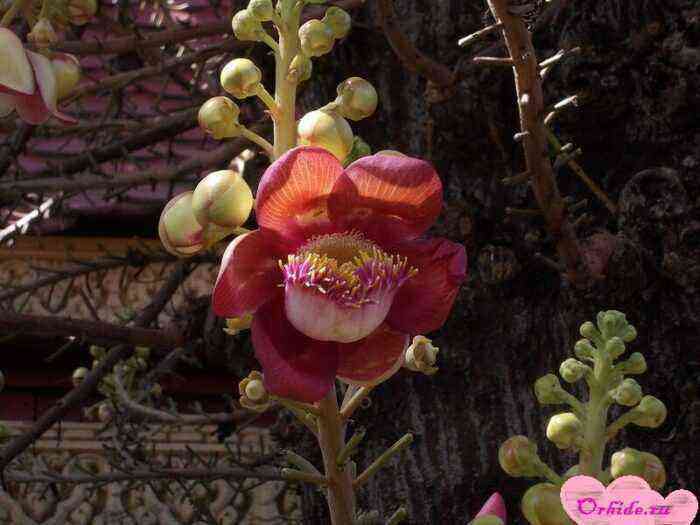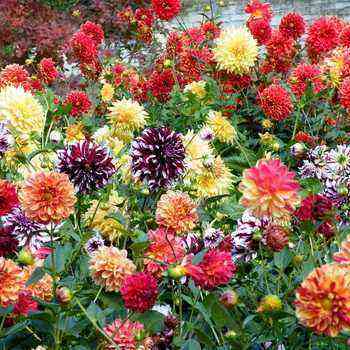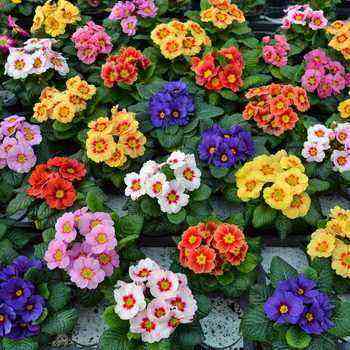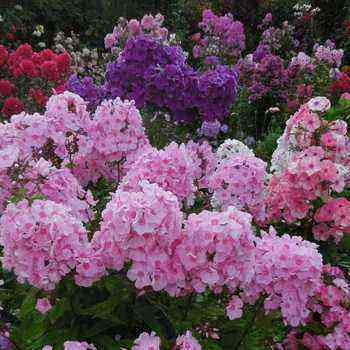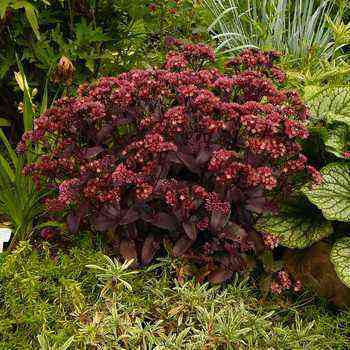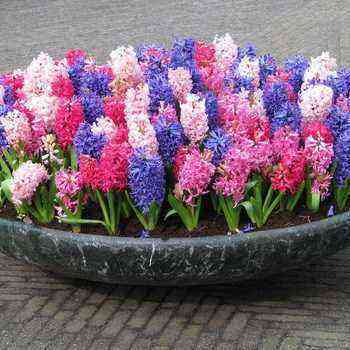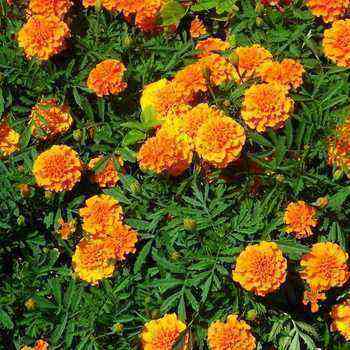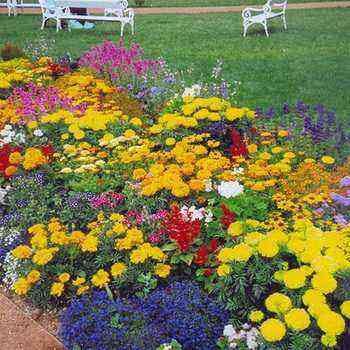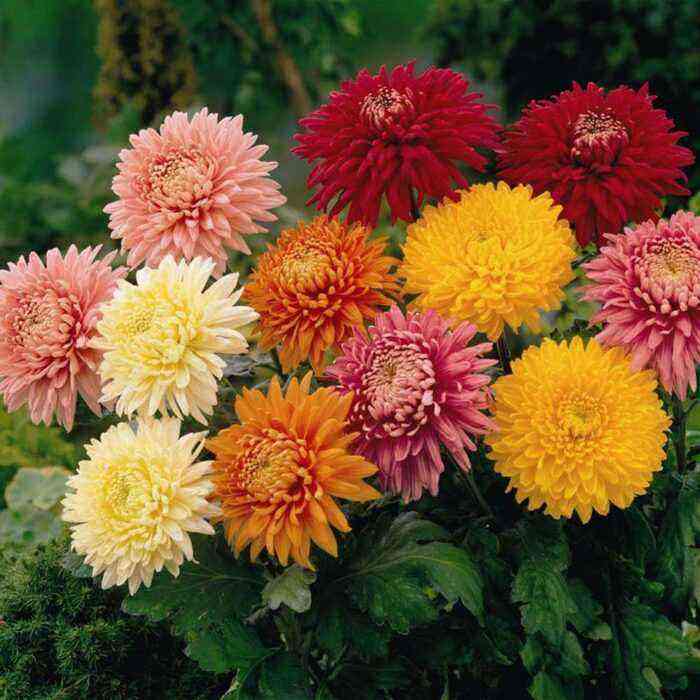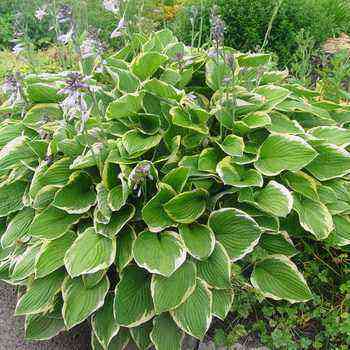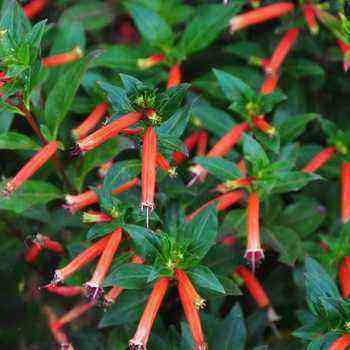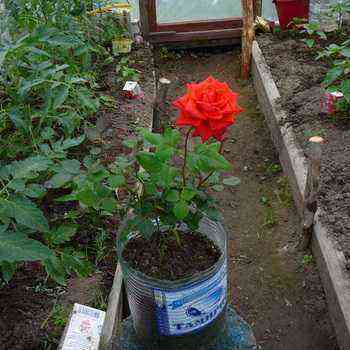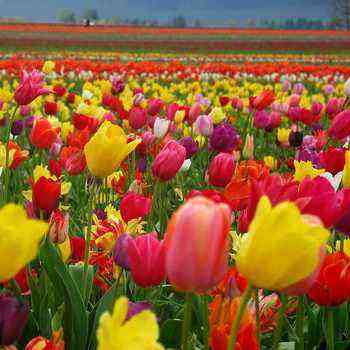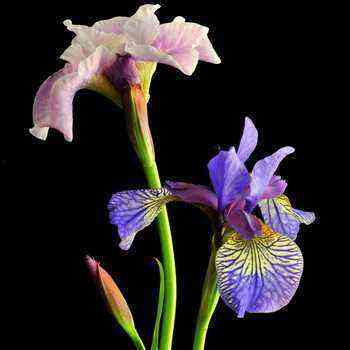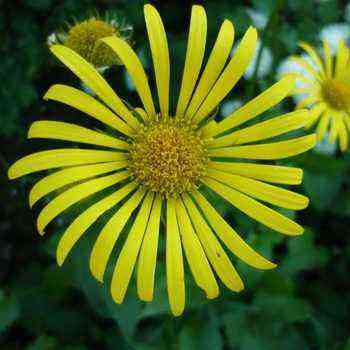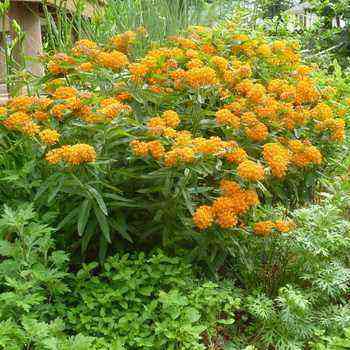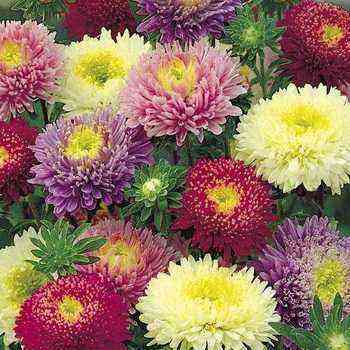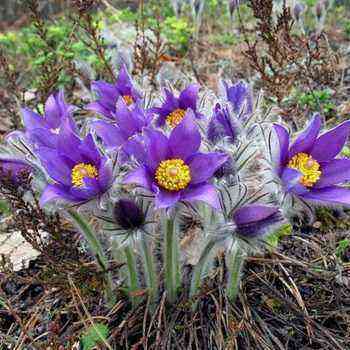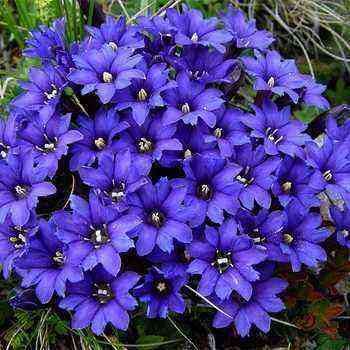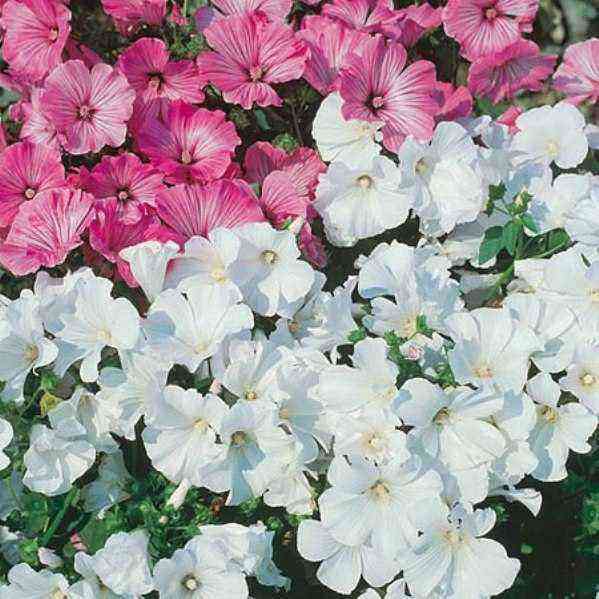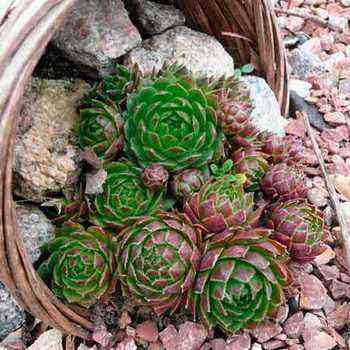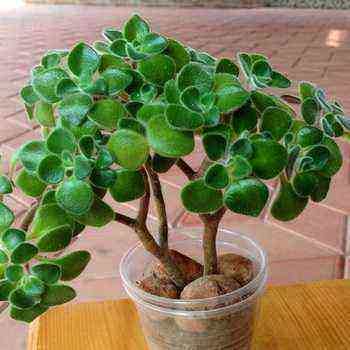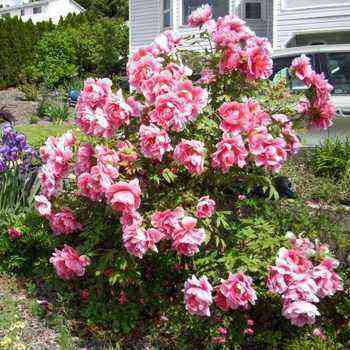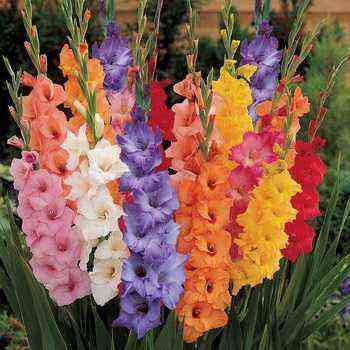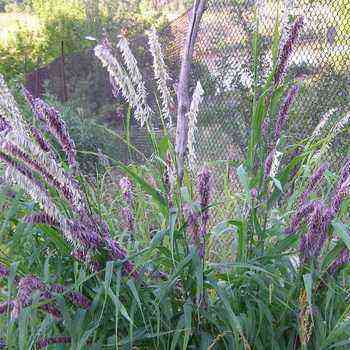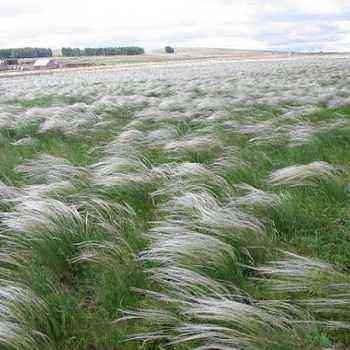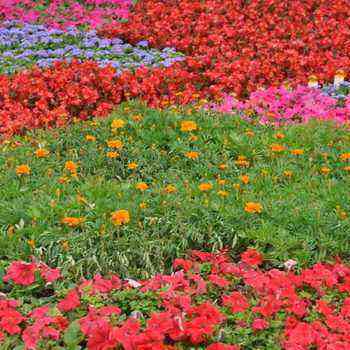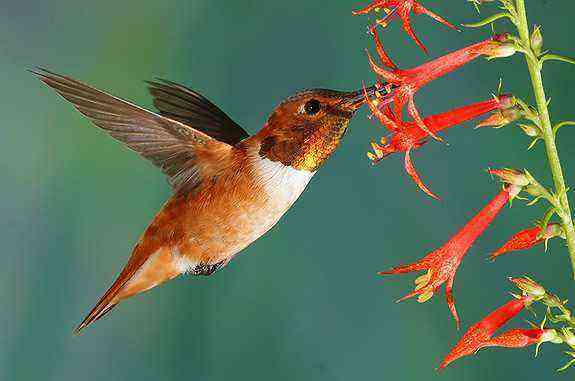
to create compositions in the style of “natural garden”. And, of course, many plants growing in the mountains are perfect for decorating rockeries and alpine slides.
Photos of mountain flowers and their names are widely presented on this page.
Beautiful plants of mountain areas
Azorella (AZORELLA). Celery family.
Azorella three-forked (A. trifurcata) – mountain plant-perennial from the temperate zones of the mountains of New Zealand. Low “pillows” (height 5-15 cm) are made of rosettes of beautiful wintering heavy-cut leaves.
The flowers are white-green, small, expressionless.
Growing conditions. Sunny areas with well-drained stony, but fairly humus-rich neutral soils.
Breeding. Seeds (sowing in spring), dividing the bush (in spring and late summer), cuttings (in summer).
Armeria (ARMERIA). Lead family.
These are mainly plants of the Mediterranean mountains. Low bushes (10-20 cm) with numerous linear dark green leaves in a dense basal rosette.
Pay attention to the photo of these mountain flowers: the armeria peduncle ends with a capitate inflorescence of small pink or purple flowers.
Types and varieties:
Armeria seaside (A. maritima) and its varieties:
Alba, Rosea
“Splendens”.
Alpine armeria (A. alpina) – smaller whitish inflorescences, height 15 cm.
Armeria soddy (A. caespitosa) – the lowest, most compact (6 cm).
Armeria plantain (A. pseudarmeria) – 30 cm high.
Growing conditions. Sunny places with well-drained poor acidic soils.
Breeding. Seeds (sowing before winter), dividing the bush (spring, August), cuttings with a heel. The transplant is carried out every 2-3 years, youngsters. Planting density – 16 pcs. per 1 m2.
They are planted in rockeries and in the foreground in flower beds. They stand well in cutting. Combine with low stonecrop, creeping phlox.
Alissum beetroot (ALYSSUM). Cabbage family (cruciferous).
About 100 species of these flowers grow in the mountains of Southern Europe and Siberia. These are low-growing plants (10-30 cm), forming dense bushes of small leaves and flowers, collected in a dense brush. Alyssum can be annual or perennial.
Views:
Alissum mountain (A. montanum) – bushes 10 cm high, small gray-green leaves, yellow flowers, blooms in May.
Alyssum silver (A. argenteum) – height 30-40 cm, grayish-green leaves, yellow flowers in racemose inflorescences, blooms in June-July.
Alyssum is rocky (A. saxatile = Aurunia saxatile) – highly branched shoots form a bush 20-30 cm high, the leaves are tomentose-silvery, the flowers are yellow in a dense brush, blooms in May-June.
Grades:
“Nitrinum” – height 30 cm, “Compactum” – 20 cm.
“PLenum” – 30 cm.
Used in rockeries and flower beds in the border.
Growing conditions. Sunny location with well-drained sandy soils, neutral or alkaline.
Breeding. Seeds (sowing in spring). Seedlings bloom in the second year. Propagation by stem cuttings after the end of flowering. Planting density – 16 pcs. per 1 m2.
Astilba (ASTILBE). Family of saxifrage.
The name of this mountain plant comes from the Greek words – “very” and stilbe – “shine” and is given to the plant because of the shiny leaves. In nature, astilbe grows in the mountain forests of East Asia and North America. But cultivated mainly varieties of hybrid origin, united under the name of Astilba Arends (A. x arendsii), 60-100 cm high.Plants have a thick, branched, superficially located rhizome, from which numerous thin, but strong stems, bearing beautiful pinnate – dissected shiny leaves (often reddish in spring) and ending in an openwork paniculate inflorescence of small flowers of different colors (except for yellow and pure blue).
In total, about 200 varieties of astilba are known, which are divided into 12 groups depending on their origin.
Types and varieties:
Group I: Astilba x arendsii with purple-lilac inflorescence, height 80-100 cm.
Group II – hybrids astilboides (Astilboides Hybrida), compiled by old varieties (eg “BLondine”).
Group III – undersized hybrids astilba chinese (A. chinensis “Pumila”), grade “FinaLe” – violet-pink.
IV – hybrids curly astilbe (A. crispa), miniature plants with strongly dissected leaves (for example “Perkeo” – 20 cm high, with dark pink flowers).
V — Astilba hybrid (A. x hybrida), varieties not included in other groups: “America” - 70 cm high, with light purple inflorescences.
VI — Japanese hybrids (Japonica Hybrida), low (30-40 cm), compact, early flowering, inflorescence – loose brush: “DeutschLand” with white flowers, 50 cm tall.
VII — Lemoine hybrids (Lemoine Hybrida), old varieties, such as white “MontbLan”.
VIII — Pink hybrids (Rosea Hybrida) – “Peach BLossom”.
IX – hybrids astilbe common (A. simplicifolia) with drooping inflorescence: “DunkeLLachs” with dark pink flowers.
X — Astilba Take (A. taquetii): “Superba” – 100 cm tall, pink.
XI — Astilba Thunberg (A. x thunbergii- Thunbergii Hybrida) – about 100 cm high, loose, branched inflorescence: “Prof. Van der WieLen ”with white flowers.
XII group – hybrids astilbe naked (A. glaberrima Hybrida) – thermophilic astilbe.
Growing conditions. With watering, they grow well in any light, but in full light, the duration of flowering is shortened. Therefore, it is better to plant astilba in the shade and partial shade, on moist clayey fertile soils. Reacts well to mulching in autumn with peat or rotted wood chips.
Breeding. Propagated by dividing the bush (in spring) and in early spring – by a renewal bud with a part of the rhizome (with a “heel”). The buds are planted in a greenhouse with sand and peat, where they quickly take root and by autumn they form a rhizome and several shoots. Planting density – 7-9 pcs. per 1 m2.
Astilba is the best decoration for a shady flower garden. It can be planted from the north side of the house, where it is dark, humid and no other plants are blooming.
Look at the photo of these mountain flowers: astilba looks great against the background of undersized ground cover plants (zelenchuk, yasnotka, tiarka, etc.) and in the border of flower beds. It is not recommended to plant it in rockeries, where it dries quickly under conditions of good drainage.
All astilbe are stably ornamental plants that are practically not damaged by diseases and pests. Their peculiarity is that they quickly grow back after damage caused by spring frosts.
Bug (JASIONE). Bellflower family.
Low-growing (25-30 cm) mountain perennial with a spherical bush and capitate inflorescence.
Types and varieties:
Perennial bug (J. perennis), variety: “Blau Licht” – bright blue flowers.
Mountain bug (J. montana) и smooth (J. laevis) – lilac flowers.
Growing conditions. Sunny areas with well-drained soils.
Breeding. Seeds (sowing in spring) and dividing the bush (in spring and late summer). Self-seeding is possible. Planting density – 16 pcs. per 1 m2.
They are used on sunny rockeries and in curbs.
Waldsteinia (WALDSTEINIA). Family of Rosaceae.
Perennials (about 5 species) from the mountain forests of Eurasia and North America. The leaves are large, three-lobed, dense in the root rosette, often overwinter. They grow in thickets 15-35 cm high due to above-ground stolons ending in young rosettes. The flowers are bright yellow, shiny. Flowering in spring is long and abundant.
Types and varieties:
Waldsteinium trifoliate (W. ternata) и gravitational (W. geoides) – height 15 cm, leaves are large, hibernating.
Waldsteinia strawberry (W. fragarioides) – the leaves are similar to the leaves of strawberries.
Growing conditions. Shady areas with loose soils. These flowers growing in the mountains are unpretentious and form a perennial ground cover.
Breeding. By dividing the bush, young rosettes (at the end of summer). Planting density – 16 pcs. per 1 m2.
What other plants grow in the mountains
Shower (CALAMINTHA. Lamb family).
Large-flowered shower (C. grandifiora) – creeping low (30-50 cm) perennial growing in the mountainous shady forests of Central Europe and the Caucasus. In June-August blooms with small purple flowers, collected in whorls.
Growing conditions. Shaded rocky areas.
Breeding. By dividing the bush (in spring), stem cuttings (in summer). Planting density – 9-12 pcs. per 1 m2.
They are used as part of a flower garden, in mixborders, as well as for cutting. It is used in green teas, as a flavoring agent and for medicinal purposes.
Cyclamen, dryak (CYCLAMEN). Family of primroses.
Perennial tuberous plants, 15-18 species of which grow in the mountain forests of Southern Europe and the Caucasus. They are small plants with beautiful kidney-shaped leaves that have a marble pattern. Leaves live in spring and early summer. At the end of summer, the leaves die off and grow back in the pre-winter. The flowers are small, pink, graceful, 1,5-2 cm long. They bloom immediately after the snow melts. In the conditions of central Russia, subject to the necessary conditions, it can grow for a long time and even form self-seeding. But annual flowering is not guaranteed, and the plant itself is noticeably smaller (the diameter of the tuber is 2-4 cm, and not 15-20 cm, as in nature).
The application is limited, as the plant is unstable. But it is possible to grow in small quantities on shaded rockeries.
Species and varieties. More often than other species are grown flowering in spring:
Cyclamen kosky (C. coum) – height 10 cm, plant in the mountains of the Western Caucasus.
Cyclamen Kuznetsova (C. kuznetzovii) from the Crimea and spring (C. vernum) – from the Caucasus.
Cyclamen european (C. europaeum) – blooms in autumn.
Growing conditions. Only shaded areas with rich, forested, well-drained soils and annual leaf fall cover are suitable for growing cyclamens.
Breeding. By dividing the tuber into pieces with a renewal bud (in the middle of summer). Sowing of freshly harvested seeds is possible. Seedlings bloom in the 3-4th year. Planting density – 25 pcs. per 1 m2.
Scabiosa (SCABIOSA). Teil family.
Perennials from mountain meadows in the southern regions of the temperate zone of Eurasia. These are short-rhizome plants with a low-branched erect stem, with pinnately dissected spectacular bluish leaves. Basal leaves are simple. The flowers are small, bright, in a capitate inflorescence. The corolla is four to six lobed, large in the marginal flowers. The inflorescence resembles a basket of Compositae.
Views:
The most spectacular scabiosa Caucasian (S. caucasica) – height 50-80 cm.
Columnar scabiosa (S. coLumnaria) – height 30 cm.
Grades:
Alba, Clive Greaves.
“Moerheim Blue” – blue flowers.
Imperial Purple, Stafa – Pink.
Growing conditions. Sunny areas with alkaline, well-drained soil.
Breeding. Seeds (sowing in spring), varieties – by dividing the bush (spring). Planting density – 20 pcs. per 1 m2.
Shirokokolokolchik (PLATICODON). Bellflower family.
Large flowers (P. grandiflorus) – the only species of the genus, grows on the dry slopes of the hills of the Far East. Medium height (40-50 cm) bush of numerous leafy erect shoots, taproot. The name of these mountain flowers speaks for itself – the flowers of the shirokokolokolchik are large, open, at the top of the stem, 1-3.
Grades:
“Albus” – white, “Mariesii” – bright blue.
Shell Pink – pink.
Growing conditions. Sunny places with loose, well-drained garden soils without moisture stagnation.
Breeding. Seeds (sowing in spring), seedlings bloom in the 2-3rd year; perennial bush. Varieties are propagated by dividing the bush or in early spring by a bud with a “heel”. Planting density – 12 pcs. per 1 m2.
Violet (VIOLA). Violet family.
Speaking about what other plants grow in the mountains, one cannot but recall violets – a large genus (about 400 species). In culture, a two-year-old violet is most often grown – Pansies (V. x Wittrockiana). In perennial violets, flowers are small (1,5-3 cm in diameter), leaves are round, often hibernating. They grow either in bushes, or form a thicket 10-20 cm high.
Types and varieties:
Altai violet (V. altaica) – purple flowers with yellow fauces.
Violet yellow (V. lutea) – from the mountains of Western Europe, yellow flowers with dark strokes.
Violet graceful (V. gracilis) – from the Pyrenees, large bluish-purple flowers, varieties: “Major”, “Moonlight” – yellow.
Violet nodule (V. cucullata = V. papilionacea) – grows in wet meadows of eastern North America, leaves are bundle-shaped, flowers are violet-blue, the variety “Freckles” has white flowers with purple specks.
Violet labrador (V. labradorica) – from the mountains of eastern North America, with rounded reddish leaves, a creeping shoot and a dark purple flower.
Horned violet (V. cornuta) – from the Mediterranean mountains, blue-violet flowers with a spur.
Violet “Alba” – white, “Yellow Perfection” – yellow.
“Blue Perfection” – blue, Molly Sanderson – dark.
In shady gardens they grow fragrant filka (V. odorata) with creeping stems forming a “carpet” of wintering rounded leaves, small flowers, there are varieties with flowers of different colors (white – “Christmas”, purple – “Red Charm”, etc.), very fragrant, bloom from the end of April.
Violet Reichenbach (V. reichenbachiana) – plant of deciduous forests of Europe, bush 20-35 cm high, wintering leaves, small purple flowers, forms massive self-seeding.
Growing conditions. Sunny and semi-shaded areas with rich, loose soils. Learn more
Breeding. By dividing the bush after 3-4 years (August) and seeds (sowing before winter), the seedlings bloom in the 2nd year. They often form self-seeding.
Rhodiola (RHODIOLA). The Tolstyankov family.
A numerous genus, the species of which grow in the mountains of Eurasia and North America. Rhizomes are thick, superficial; the leaves are gray, thickened. All species grow well, form perennial patches (small thickets).
Look below at the photo of flowers growing in the mountains, each of them is beautiful in its own way.
Types and varieties:
Rhodiola toothed (R. heterodontha) – height 15-20 cm, rounded leaves.
Rhodiola rosea (R. rosea) – height 30-40 cm, the leaves are linear, the rhizome becomes bright pink when damaged.
Rhodiola Semyonova (R. semenovii) – height up to 60 cm, green leaves, yellow flowers.
Rhodiola whole leaf (R. integrifolia) – height 35-40 cm, pink flowers.
Growing conditions. Sunny areas with loose, well-drained soils, Rhodiola do not tolerate stagnant moisture.
Breeding. Seeds (sowing in spring), seedlings bloom in the 3-4th year. By dividing the rhizome (after the end of flowering) and stem cuttings (in spring). Planting density – 9 pcs. per 1 m2.
Bryozoan, sagina (SAGINA). The carnation family.
Low-growing perennials with needle-shaped leaves, forming low “cushions” of highly branching graceful shoots. Flowers are small, flowering is long. Taproot. Plant from the rocks of the mountains of Europe.
Types and varieties:
Bryozoan subulate (S. subulata) – very low (5 cm), rapidly growing “pillows”, grade “Aurea” – golden leaves.
Bryozoan saginiform (S. saginoides) – height 10 cm, forms dense cushions.
Growing conditions. Sunny areas with poor sandy soils, do not tolerate stagnant moisture.
Breeding. Seeds (sowing in spring); cuttings (in summer). Juvenile, transplant after 3-4 years. Planting density -25 pcs. per 1 m2.
Krupka, draba (DRABA). Cabbage family (cruciferous).
A large (almost 300 species) genus, the species of which grow in mountains around the world. These are mainly low-growing (10-15 cm) plants with pubescent linear leaves in rosettes, cushion-shaped. Flowers are small in racemose inflorescence, white or yellow.
Types and varieties:
Evergreen groats (D. aizoides) и mossy (D. bryoides).
Brunel-leaved grits (D. bruniifoiia) – Plants forming low (5-15 cm) dense “cushions” of grayish-green wintering leaves, early flowering (April).
Siberian groats (D. sibirica) – forms a thicket of taller (20 cm) shoots.
Growing conditions. Sunny places with poor, well-drained soils.
Breeding. Seeds (sowing in spring) and stem cuttings (after the end of flowering). Stocking density pcs. per 1 m2.
Yaskolka (CERASTIUM). The carnation family.
Rocky perennial, forming clumps of shoots with silvery leaves. Height about 30 cm, small white flowers.
Types and varieties:
Alpine lamb (C. alpinum) и Bieberstein jassel (C. biebersteinii).
Large-flowered laskolka (C. grandiflorum).
Felt splinter (C. tomentosum), the most interesting variety is “Silver Carpet”.
Growing conditions. Sunny place with well-drained poor (rocky or sandy) soils.
Breeding. Sowing seeds in spring (seedlings bloom at the end of summer) or summer cuttings. The plant is small, it is necessary to renew planting every 3-4 years. Planting density – 12 pcs. per 1 m2.
Spring mountain flowers and photo of flowers in the mountains
Below are the names of mountain flowers that bloom in spring.
Vesennik (ERANTHIS). Buttercup family.
Spring-flowering low perennials with tuberous roots. There are 7 known species that grow in forests and the subalpine belt of mountains in Europe and East Asia.
The leaves are graceful, palmate-divided, on long petioles, dying off at the end of May (ephemeroids). Flowers solitary, white or yellow, from petal sepals with three teeth; under the flower is a whorl of deeply dissected leaves. Height 20-25 cm.
Types and varieties:
Spring spring (E. hyemalis) – plant of the forests of Europe, the flower is yellow.
Vesennik star (E. stellata) – a plant from the Far East, a white flower.
Siberian Vesennik (E. sibirica) – a plant of southern Siberia, yellow flowers, flowers.
Vesennik Tubergen (E. x tubergenii) – varieties “Glory”, “Guinea Gold”.
Growing conditions. Shaded areas under the canopy of trees with loose forest soils.
Breeding. Seeds (sowing freshly harvested, self-seeding is possible) and dividing rhizomes (after the end of flowering). Planting density – 25 pcs. per 1 m2.
Gentian, gentian (GENTIANA). Gentian family.
A large (about 400 species) genus of perennial grasses of various heights, growing in the mountains of almost all continents. Many species are decorative, almost all of them are difficult to cultivate (this is a mycorrhizal plant). But the beauty and brightness of their flowers, especially blue ones, attract florists.
Types and varieties:
Gentian stemless (G. acaulis) и spring (G. verna) – low (8-10 cm) bushes with large bright blue flowers blooming in May-June.
Gentian Seven-part (G. septemfida) и rough (G. scabra).
Gentiana daurskaya (G. dahurica) form bushes 3040 cm high, bloom with blue flowers in July-August.
Gentian yellow (G. lutea) – a tall plant (up to 110 cm) with large yellow flowers, flowering in August.
Gentian gorse (G. asclepiadea) – about 80 cm high, blooms in July-August.
Later than others (in September) blooms gentian chinese decorated (G. sinoornata)forming a low bush (15 cm) with bright blue flowers with green stripes.
Growing conditions. All gentian plants are mountain plants that prefer sunny areas with fertile, well-drained soils with normal moisture. It is recommended to add crushed stone or pebbles mixed with humus.
Gentian is difficult to grow, as seeds do not germinate well, seedlings fall out a lot, and adult plants react negatively to division and transplantation. There are exceptions, but they are rare.
Brunner (BRUNNERA). Borage family.
These plants in nature are represented by only three forest species, two of them are cultivated. They are also called “perennial forget-me-nots”, as these are spring mountain flowers, which are low (30-40 cm) bushes with near-ground heart-shaped leaves on long petioles and a paniculate inflorescence of small bright blue flowers.
Types and varieties:
Brunner large-leaved (B. macrophylla) – a plant of the mountain forests of the Caucasus. Forms a dense, slowly growing bush, cultivar with silvery spots on the leaves – “Longtris”.
Brunner Siberian (B. sibirica) – a plant of the forests of Altai, has a long, thick, branching rhizome, therefore, forms thickets.
Growing conditions. Plants are undemanding, but prefer shady and semi-shady places with rich soils and moderate moisture.
Breeding. Seeds (form massive self-seeding) and segments of rhizomes at the end of summer. Planting density – 9 pcs. per 1 m2.
Rare mountain flowers of Vancouver
Vancouveria (VANCOUVERIA). The barberry family.
Vancouveria six-chained (V. hexandra) – perennials from the mountain forests of the western United States. These are low (25-30 cm) plants with a long rhizome (therefore they form thickets), the leaves are light green, dense (but not hibernating), trifoliate on thin, rigid petioles. The flowers are white in an openwork inflorescence.
Growing conditions. Shady areas under a canopy of broad-leaved trees, the foliage of which is covered by Vancouverian bushes in autumn. Any soils, but well-drained.
Breeding. By dividing the bush (at the end of summer). Planting density – 16 pcs. per 1 m2.
Vancouveria – rare mountain flowers from California, little known in the culture. This ground cover plant in nature forms dense large spots. In culture in central Russia, it grows slowly: per year, the growth of each specimen is no more than 2-3 cm. But the patience of the gardener will be rewarded at its true worth. Firstly, Vancouverian bushes live a very long time – up to 40 years. Secondly, its trifoliate leaves and delicate white flowers attract attention with their originality. In addition, this herbaceous decorative perennial is distinguished by its high drought resistance and shade tolerance, therefore it is recommended for shaded areas and for rockeries. The culture does not tie seeds.
As you can see in the photo, these mountain plants are often used in shady rockeries to create ground cover on the trunk circles.
Beautiful mountain flower edelweiss and its photo
Edelweiss (LEONTOPODIUM). Aster family (Compositae).
Mountain perennial low-growing (20-25 cm) grasses with curved branchy stems and a basal rosette of lanceolate leaves.
Look at the photo of mountain edelweiss: flowers in small baskets form a corymbose inflorescence. The whole plant is pubescent, grayish-silvery.
Types and varieties:
Edelweiss Alpine (L. alpinum) – rocks of the alpine belt of the mountains of Europe.
Siberian edelweiss (L. leontopodioides) – steppes and rocky slopes of Siberia.
Edelweiss Palibina (L. palibinianum) – dry meadows of Primorye.
The last two species are more stable in the conditions of central Russia.
Growing conditions. The mountain flower edelweiss grows in sunny areas with rocky or sandy soil enriched with lime. Good drainage is essential.
Breeding. This beautiful mountain flower is propagated by dividing the bush (in spring or late summer) and stem cuttings (in May-June). Division and transplant every 2-3 years.
Mountain plants: mountain lavender flower
Lavender (LAVANDULA). The family of lamellar (labiate).
Lavender (L. angustifoiia) – semi-shrubs from the mountain slopes of the Mediterranean. This is a beautiful plant of mountains with bushes 50-60 cm high, covered with dense rigid peduncles, bearing the final spike-shaped inflorescence of small bluish flowers. The mountain lavender flower has narrow silvery leaves. The whole plant exudes a pleasant aroma.
Grades:
“ALba”, “Dwarf BLue”
Minstead, Rosea.
Growing conditions. Sunny areas with loose, lime-rich soils, well-drained, without stagnant moisture. An important condition for good condition is the annual spring pruning of bushes.
Breeding. Seeds (sowing in spring), cuttings. Planting density – 12 pcs. per 1 m2.
Herbaceous plants growing in the mountains
Catnip, catnip (NEPETA). The family of lamellar (labiate).
Herbaceous perennials or semi-shrubs growing in the mountains of the Mediterranean, Caucasus, Central Asia. The root is thick, taproot; the stems are numerous, rigid, lodging, branched. Leaves with silvery pubescence.
The flowers are small in a spike-shaped panicle. Long bloom – 2-3 months; the plant has a strong, lemon-like scent that repels pests and purifies the air.
Types and varieties:
Catnip (N. cataria) – the flowers are blue.
Kathowicz Fassin (N. x faassenii) – lilac flowers, varieties: “Snowflake”, “Six Hills Giant” – 50 cm high.
Large-flowered catnip (N. grandiflora) – blue.
Catnip Musina (N. mussinii) и Siberian (N. sibirica) – 80 cm high.
Growing conditions. Sunny location with rich, well-drained soils enriched with lime.
An excellent plant for mixborders (planting in the foreground), in the curb, on the lawn, in rockeries, flower gardens. Dried flowers are used as flavoring agents.
Breeding. Seeds (sowing in spring), cuttings (in summer). Planting density – 9 pcs. per 1 m2.
Muscari, mouse hyacinth, viper onion (MUSCARI). The family of hyacinths (liliaceae).
Small-bulbous plants, 60 species of which grow in the mountains of the Mediterranean. Light bulb, ovoid, leaves are linear basal; flowers are tubular, small, in a dense racemose inflorescence. Height 15-20 cm. In some species, the leaves grow back in autumn and winter.
Types and varieties:
Muscari Armenian (M. armeniacum) – the flowers are blue with white teeth.
Muscari pale (M. pallens) – the flowers are almost white.
Muscari uviform (M. botryoides) – the flowers are dark blue.
Muscari racemose (M. racemosum) – flowers are dark purple and other types.
Growing conditions. Sunny areas with loose fertile soils.
Breeding. Muscari form a mass of baby onions, so they grow rapidly. The bulbs are dug up after the end of flowering, dried and planted in the soil at the end of August. Planting density – 30 pcs. per 1 m2.
Scopoly (SCOPOLIA). The nightshade family.
Carnioli scopoly (S. carnioLica) – plant of mountain forests of Central and Southern Europe. Herbaceous rhizome perennial 60-80 cm high, forming a beautiful spreading bush of straight leafy stems. Flowers are dark red-brown, solitary, drooping.
Growing conditions. Shady areas with loose fertile soils and moderate moisture.
Breeding. By dividing the bush (in spring and late summer). Stocking density – single.
Tsitserbita (CICERBITA). Aster family (Compositae).
Perennial rhizome grasses with single erect stems growing in the mountain forests of the Caucasus, Siberia, Central Asia. On the stem are beautiful lyre-shaped leaves, thin, green above, and below – glaucous, leaf petiole – winged. Stems (height 100-120 cm) end with a branched inflorescence of rather large bright blue baskets. Interesting with original leaves and late (before frost) flowering. Plants are still little known in culture, but are promising for use in landscape style flower beds.
Types and varieties:
The most interesting are cyserbits with blue and bluish-violet flowers: Tien Shan cyserbit (C. thianschanica) – from Central Asia and alpine (C. alpina) – from the Carpathians.
Ural Tsitserbita (C. uralensis) и large leaf (C. macrophylla) – from the Caucasus.
All of them are stable in culture and even capable of forming massive self-seeding.
Growing conditions. Shaded and semi-shaded areas with any sufficiently moist soils.
Breeding. Seeds (sowing before winter or spring) and dividing the bush (in spring). Planting density – 5 pcs. per 1 m2.
Incarvillea (INCARVILLEA). The bignonium family.
The genus contains 14 species growing in Central Asia and Western China, on sunny mountain slopes, in the forest belt. Herbaceous perennials have a thick taproot, basal rosette of feathery lyre-like dense dark green leaves. Peduncles are straight, bear a terminal racemose inflorescence of 3-5 tubular large flowers, similar to gloxinia. The plants are very showy.
Types and varieties:
Incarvillea Delaway (I. deiavayi) – height 30 cm, flowers are large (4-6 cm in diameter), varieties: “Purpurea”, “Snowtop”.
Incarvillea dense (I. compacta) – height 15 cm, flowers are large (up to 8 cm), purple with a yellow throat.
Incarvillea grandiflorum (I. grandifiora) – height 60-80 cm.
Olga’s Incarvillea (I. oigae) – height up to 150 cm, branched peduncles, small flowers (2 cm in diameter) in paniculate inflorescence.
Growing conditions. Sunny places with loose, light, fertile, well-drained soils.
Breeding. Seeds (sowing in spring), seedlings bloom in the 3-4th year. Vegetative propagation is hampered, possibly in June-July by leafy cuttings. Plants are unstable in central Russia, they can fall out in severe winters, so it is safer to slightly cover them with spruce branches.
